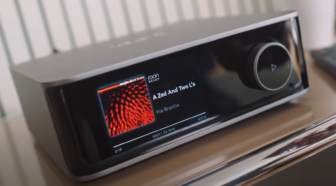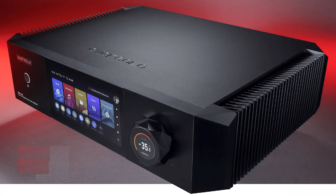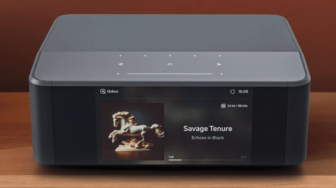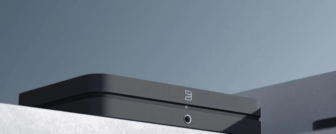Naim NSS 333/NPX 300 Review
I should have known better. Experimenting with Naim power supplies brings conflicts with textbook physics and certain addiction risks. But what won’t one do for an insightful streamer test?
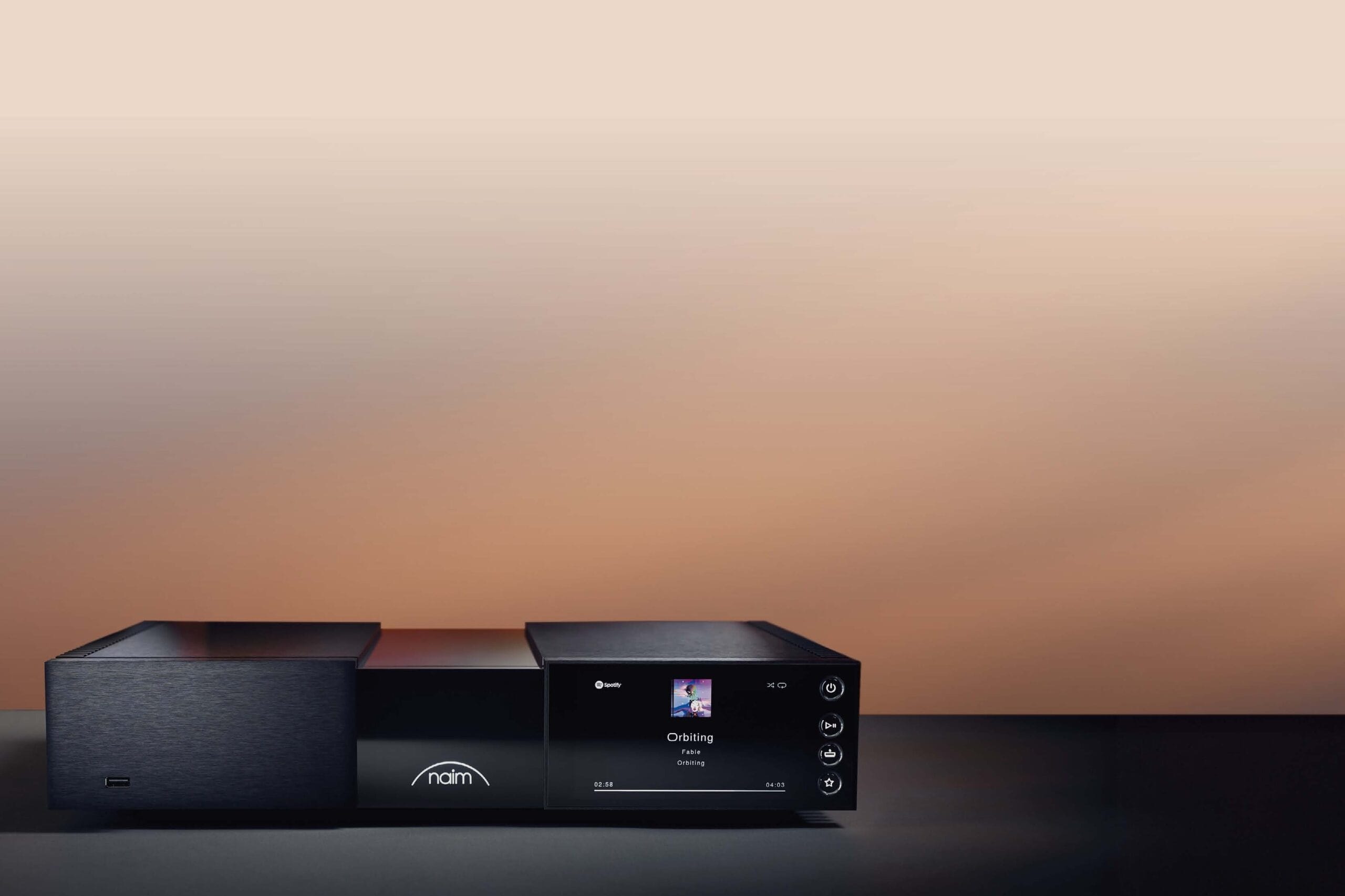
After over three decades, one is usually quite composed as a tester. That’s often what happens when a hobby turns into a job.
Listening test scenarios like “the curtain rose, and Amanda McBroom, Sara K.—or whoever is currently popular in audiophile circles—seemed to stand physically in the room” carry the risk of daydreaming while writing and being awakened by the impact on the keyboard.
Nevertheless, there are cherished habits that one cannot suppress despite all composure. For me, such a habit is that I cannot test a Naim component without incorporating personal experiences with this brand. After all, other Naim devices still play in my setup, including the Naim CDS CD player from 1992. I am as familiar with its long-term quality as with the restlessness of the Naim user. Because there’s always an outrageously expensive upgrade option somewhere in the form of a power supply that won’t let you rest when listening to music and shrinks your savings many times faster than galloping inflation.
After all, I eventually found my peace, thanks to my professional routine and the neighbors, because of whom I could never really crank up the system anyway. The setup has played practically unchanged for over 20 years—a truly relaxed enjoyment. If I want to turn up the volume, I do it in the car on the long drive to the office. If I want live atmosphere, I go to the jazz club. Accordingly, I felt a bit like someone who is fasting and invited to a party where delicious cream cakes are served.
The topic the editorial team offered me for this review was: Test the Naim NSS 333 streamer with and without the optional NPX 300 power supply. Somehow, the task intrigued me out of professional curiosity. In recent years, I had somewhat lost sight of the company’s high-end product line.
The NSS 333 belongs to the 300 series and, with its solid aluminum cooling fins, makes a better impression in an audiophile setup than previous generations. Because they exercised pure British understatement. Nevertheless, when connecting, I discovered an old-fashioned detail that, without prior knowledge, would have either gone unnoticed or been interpreted as a manufacturing defect. The conspicuously large play of the plastic frame for the three-pin power plug even testifies to great care down to the smallest detail. The floating mounting is intended to reduce the transmission of vibrations from the power cable to the housing. For the same reason, Naim used to use only very light plastic knobs: This way, as few vibrations as possible would be transmitted from the outside to the potentiometers.
The App Check
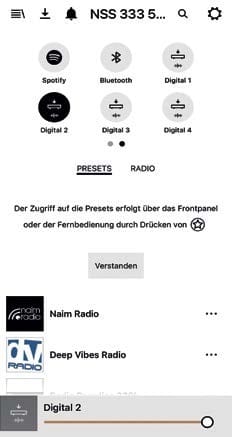

Naim relies on redundancy. You can control the NSS 333 directly on the device and via the ZigBee remote control. The Focal Naim app for iOS and Android is very intuitive to use and clearly designed. The integration of streaming services has also been well implemented. Audiophile highlight: You can even disable unused connections for sonic reasons.
Naim Streamer in the Mainstream
The NSS 333 streamer and the power supply have no rotary knobs, but on the preamps and amplifiers, Naim now pays tribute to the audiophile zeitgeist with massive aluminum knobs. The same applies to the connections. For a good three decades, the brand founded in 1973 by the now-deceased Julian Vereker stuck to its DIN sockets. But nowadays, there are also RCA sockets.
On the NSS 333, there are even XLR outputs, which can be turned on and off in the Focal Naim app for iOS and Android. And when it comes to digital connections, modern times have long since arrived at Naim. Earlier CD players like my CDS had no digital outputs whatsoever. This was based on the purist conviction that integrated units sound better anyway, converting audio data without detours over jitter-prone, compromise-laden input and output interfaces.
Meanwhile, you have the agony of choice with the NSS 333: In addition to a standard coax output, there are even digital inputs to use the NSS 333 as a DAC.
Which connection would you like? Optical Toslink, coaxial RCA or BNC sockets? Or perhaps USB? That’s also possible on the streamer, which can even play music from USB sticks. While the S/PDIF optical connection only accepts data up to 24-bit/96 kHz, the other two accept up to 24-bit/192 kHz or DoP 64Fs.
Old acquaintances for Naim connoisseurs are the two Burndy connections with bayonet locks to the separately offered power supply. Through these, the NPX 300 supplies the analog and digital circuit sections separately to avoid high-frequency interference in the sensitive analog audio signals. In the meantime, the connections have been standardized so that the same power supply can be used for different components. If the connection is severed, the shorting plugs supplied with the NSS 333 must be attached. Also, the streamer itself must not be connected to the power grid, only the external power supply.
Streamer Quick Check
- LAN ✔️
- WLAN ✔️
- iOS ✔️
- Android ✔️
- AirPlay ✔️
- Google Cast ✔️
- Bluetooth ✔️
- aptX ✔️
Supported Streaming Services:
- Spotify
- Tidal
- Qobuz
- Amazon Music
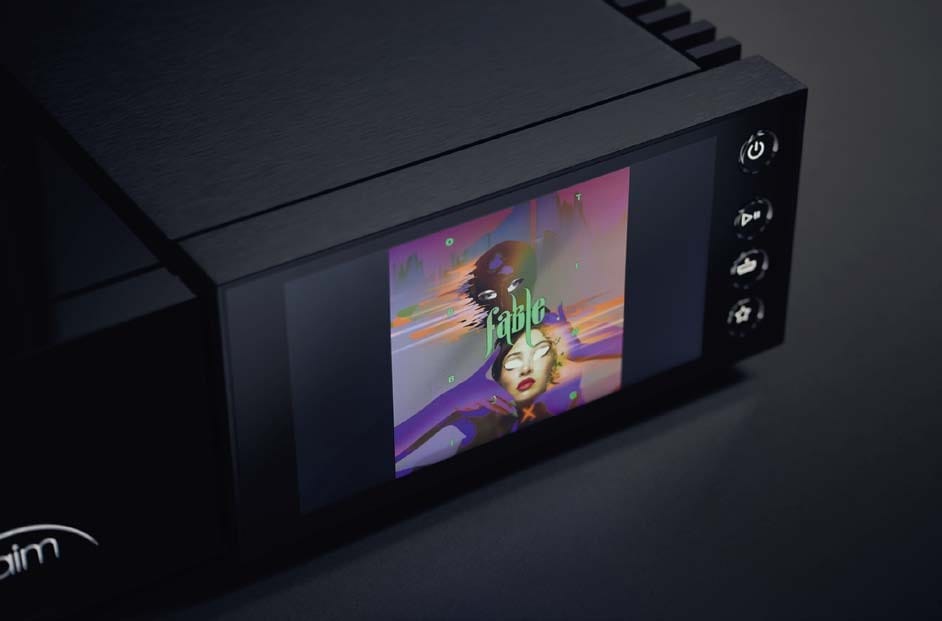
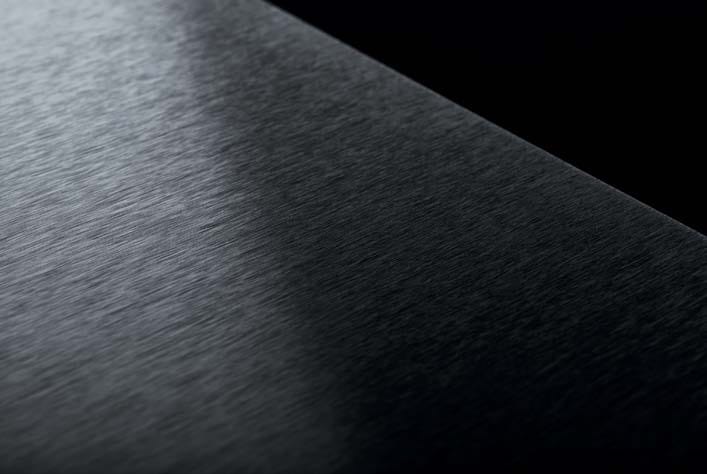
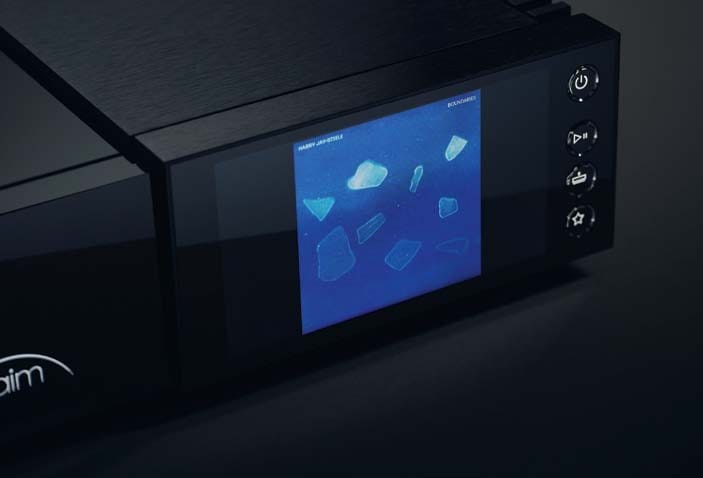
The streamer, suitable for multiroom applications, offers, in addition to app control, the luxury of a wireless remote control called ZigBee, which provides valuable services in hidden installations. Around the transmission, processing, and conversion of digital data, Naim undertakes considerable and above all consistent effort in its second-largest streamer. Two separate master clocks instead of a variable one are responsible for signals with 44.1 and 48 kHz sampling rates (or their multiples). This ensures extremely low jitter.
A DSP RAM buffer for the S/PDIF inputs is intended to eliminate jitter caused by the modulation required for the universal interface developed by Sony and Philips.
A 40-bit Sharc DSP from Analog Devices enables Naim’s proprietary oversampling digital filtering at 705.6/768 kHz, i.e., 16 times 44.1 or 48 kHz for optimal data processing. The actual D/A conversion is handled by the Burr Brown PCM1791A DAC. This 24-bit/192 kHz stereo converter chip allows, in external filter mode, bypassing the simpler integrated digital filter. In the analog output stage of the NSS 333, Naim uses discrete Class-A operational amplifiers and polystyrene capacitors manufactured according to their own specifications with extremely low dielectric absorption.
In the streaming section, Naim uses the latest NP800 module with an LVDS receiver (Low Voltage Differential Signaling) to minimize noise. In addition to internet radio with its own Naim radio channel, the NSS 333 can also play music from music services like Spotify Connect, Apple Music, Tidal including Tidal Connect, as well as Qobuz. The streamer doesn’t favor Apple or Android users, as it supports both AirPlay 2 and Google Chromecast. Music playback from UPnP or Roon servers is also possible.
For network connection, LAN and WLAN are available. A powerful Bluetooth interface with aptX Adaptive support is also on board this very solidly built, eleven-kilogram device.
Despite its toroidal transformer with four separate windings, the NSS 333 appears lightweight next to the separate power supply at this weight. But let’s turn to the acoustic effect of the power supply, which, similar to the retrofit power supply for the legendary Linn LP12, can hardly be measured but can certainly be heard.

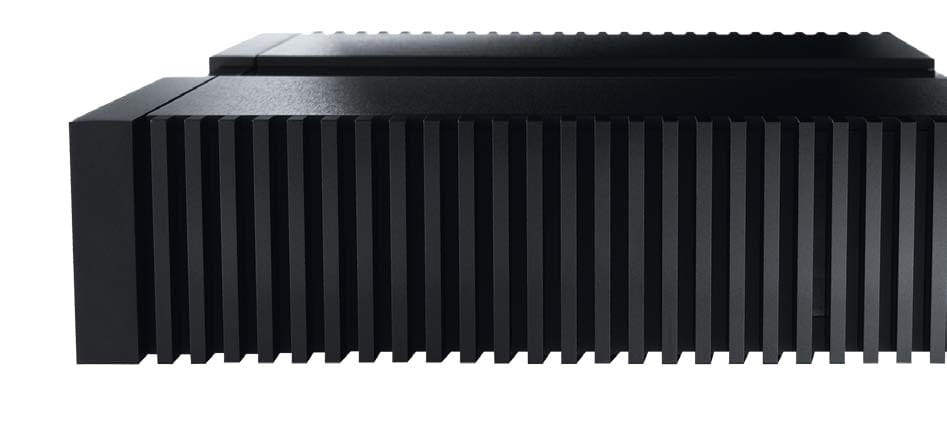
One Saw Sara Singing
Integrated into our reference system with T+A amplifier and B&W speakers, the streamer first had to face the listening test with its built-in power supply. That it would proceed extremely balanced and natural was no surprise for an old Naim user. What would especially astonish connoisseurs of earlier series are the openness and fine resolution in the highs. Also, the height, depth, and width of the soundstage immediately stood out from the perfectly coherent sound image.
The focus proved to be exceptionally sharp and stable. The authentic and emotionally gripping playback was rounded off by a considerable kick in the bass. In the track “Till Tomorrow” by Yello and Till Brönner, the fine, nuanced blowing of Brönner’s trumpet was as impressive as the strong bass of keyboardist Boris Blank. There would be few wishes left unfulfilled by this rousing performance. Nevertheless, after switching from the on-board power supply to the external one, a small miracle happened in view of the subtle measurement differences—even for a connoisseur who hasn’t experimented in this direction for a long time: The soundstage grew in all three dimensions, the instruments came a good deal closer to the listeners.
Anyone who thinks this is imagination should consider the following: “Is there someone out there in the basement corridor?” Who is slamming the heavy, steel fire doors so hard at this time? To my astonishment, it quickly turned out: The pressure wave on eardrum and diaphragm, lying at the boundary between hearing and feeling, originated from the recording. And Sara K.—I hardly dare to write it—seemed to be standing before me in person with her cover of “Whiter Shade Of Pale”—just like back when I visited Günter Pauler’s recording studio (Stockfisch Records). Oops. The past catches up with you so quickly.
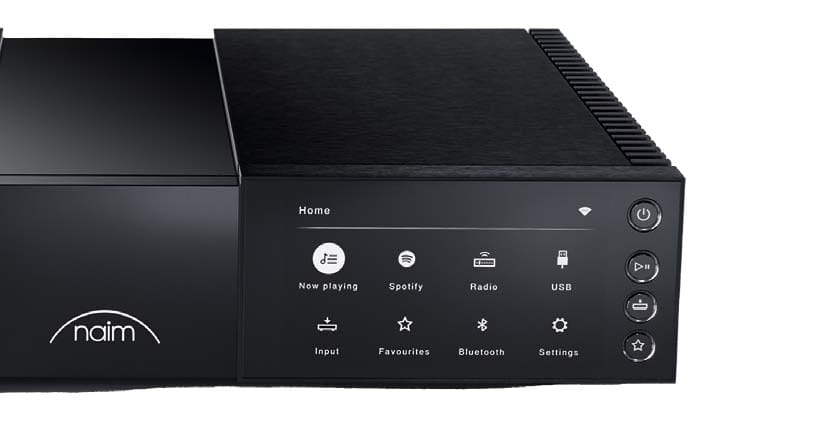
Naim NSS 333 Performance Measured
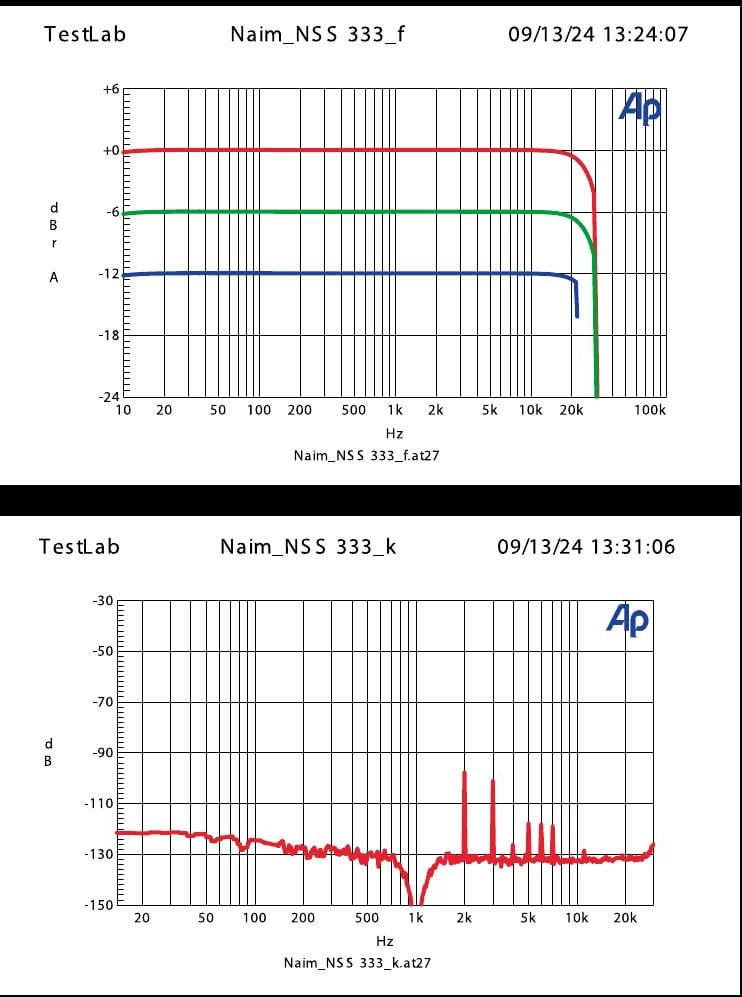
The upper transmission limit of the Naim is 28 kHz, independent of the sampling rate of the incoming PCM signal. Impulse/square wave edges appear on the oscilloscope without pre-ringing (without illustration). 1kHz/0 dBFS distortion spectrum: no mains hum even with LAN cable plugged in, quiet k2/k3 residues—corresponding THD+N value: 0.002%. Good, though not record-breaking, signal-to-noise ratio of 108 dB at RCA and XLR output, which improves by half a decibel when using the separate NPX 300 power supply. Output voltage RCA/XLR: 2.1 V; output impedance 23/46 Ω. Increased power consumption in standby: 15 W (25 W with NPX 300), power consumption in operation 18 W (30 W with NPX 300).
Naim NSS 333 Technical Specs
Model: Naim NSS 333/NPX 300
Distributor: Focal Naim Deutschland
Website: naimaudio.com
Warranty: 2 years
Dimensions (W × H × D): 43.2 × 9.15 × 31.75 cm
Weight: 11 kg
Connections
- CD Drive / Inputs: No / Yes
- USB / SD / Internal Storage: Yes / No / No
- Analog-Out / Headphones: DIN, RCA, XLR / No
- Digital-Out Coax / Optical / USB: Yes / Yes / No
- Network (LAN / WLAN): (100 Mbit) / Yes
Features
- Display: Yes
- Bluetooth Send/Receive: No / Yes
- Formats: Apple AirPlay 2, Google Chromecast, UPnP DLNA, Roon, Spotify Connect
- Internet Radio: Yes
- Streaming Services: Spotify Connect, Apple Music, Tidal Connect, Qobuz
- Resolution / Sampling Rate / MQA: 32-bit / 384 kHz; DSD128 / No
- Remote / App: Yes / Yes
- Gapless Playback: Yes
- Album Art Display: Yes
- Special Features: External power supply
Verdict
Yes, even if it costs quite a bit and thus reopens old wounds for me, I have to admit: The external power supply, still shrouded in legend because of its miraculous effect, turns an excellent streamer like the NSS 333 into a music machine that makes you completely forget that you’re listening to a recording over a substantial collection of technology.
What can only be detected as half a decibel in the lab gives the playback an authenticity that is second to none. A sound that exhibits so few clues of technical influences that it’s difficult to describe it at all. Let me put it this way: For those who have the necessary cash to spare and can turn up the volume at home as they please, I would highly recommend purchasing this streamer and its external power supply.
Pros & Cons
Pros:
- Extremely authentic, wide-range sound
- Switchable XLR, RCA, and DIN outputs
- Four S/PDIF and two USB digital inputs
- Bidirectional wireless remote control
Cons:
- Significant investment when including the power supply
Test Results
- Sound: 9.4/10 (145/155 with NPX 300 Power Supply)
- Features: 9.5/10
- Ease of Use: 9.5/10
- Build Quality: 10/10
Audio Benchmark
Overall Rating: 10/10 (155 points)
Price/Performance: High-end
When you purchase through links on our site, I may earn an affiliate commission. Here’s how it works.
Naim Audio NSS 333 Music Streamer - An Introduction
An introduction to Naim Audio NSS 333 Music Streamer and DAC with Chris Keeling from Naim and Loud & Clear's MD, Allan ...





